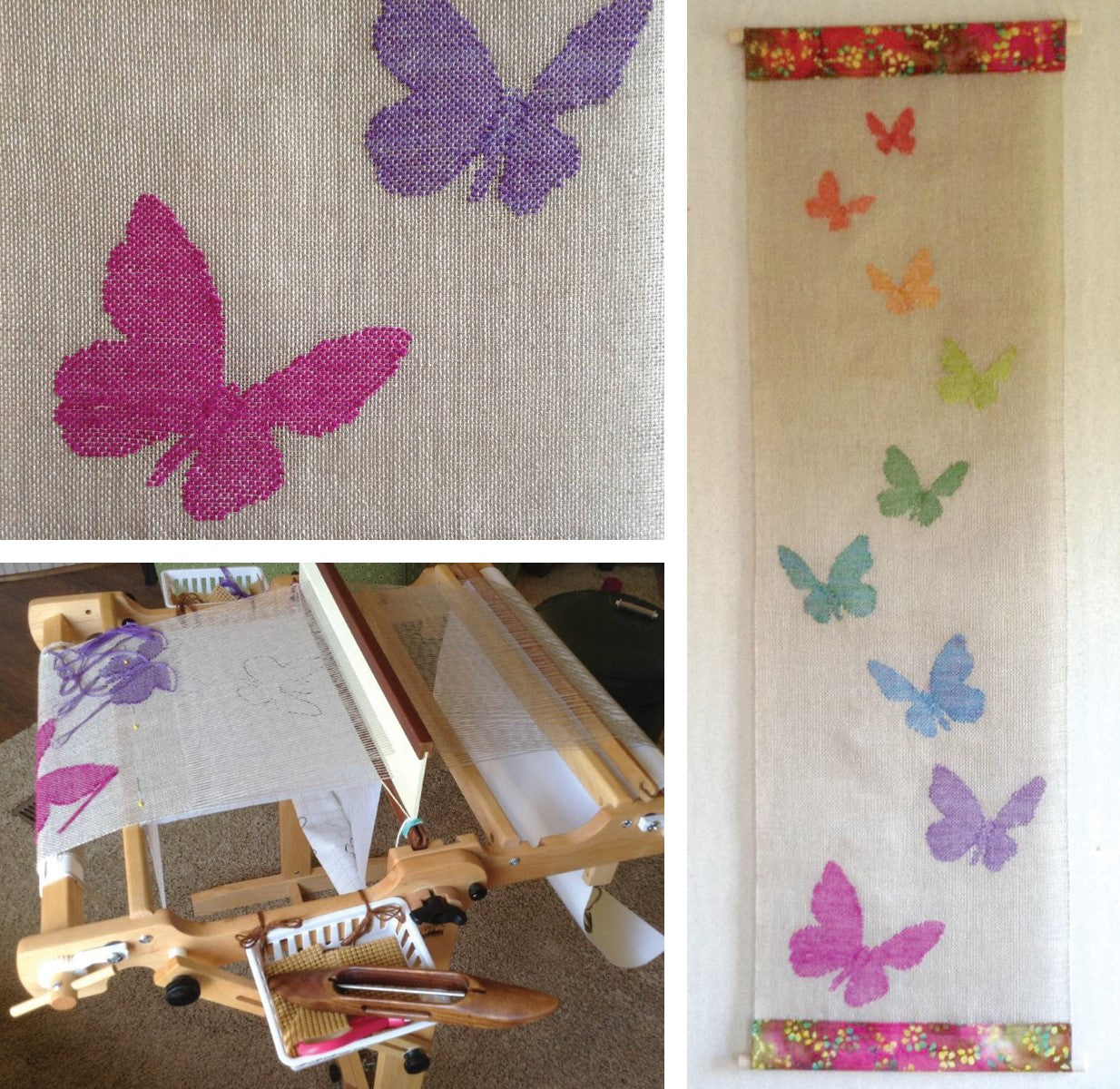By Lynette Glass
The Weaver's Cottage
Amity AR
Handwoven transparencies are related to tapestries in that you can weave intricate pictorial designs with both techniques. Transparencies are lighter weight, with inlaid patterning on a sheer plain weave background. Two wefts are required: a background weft which weaves selvedge to selvedge and a pattern weft that weaves the pattern or design. The background is open while the pattern areas dense. Transparencies are at their best when hung in a sunny window where they can catch the light much like stained glass.
This article focuses on weaving a transparency on a Flip or Cricket loom. I wanted to share these tips because someone recently told me that you can’t weave transparencies on a rigid heddle loom. In my experience it is quite possible on the Schacht Flip and Cricket Looms. Here are some of my discoveries I've made through the years.
1. Be sure to wind the warp very evenly on your warping board. This will help achieve even tension.
2. Use poster board for the packing paper (regular poster board that you would find at a hobby store—about the weight of card stock); this will help achieve a firmer surface with an inelastic linen warp.
3. Beam onto the back beam very tightly, stopping and pulling small sections across the warp with every few rotations of the beam.
4. Both the Flip and Cricket looms are great for holding the shed open as you do the inlay.
5. I use 16/2 linen set at 12 epi for the warp and 16/2 or 20/2 linen for the background weft. For inlay yarns, I use three strands of 20/2 Mora wool or 20/2 Epic wool wound together into small butterflies. This way, I can mix colors similar in value to get just the shade/hue I want.
6. Double the outside selvedge threads.
7. One of the problems when weaving with linen, which has little give, is that the slot threads are a bit slack when in an up-shed or down-shed. To correct this, I use what I call a tension stick.
On the Flip Loom, I use the Schacht Wolf apron bars for this. They are about ¾" thick, and I like them to be about 2-3" wider than my warp width. I insert this in the shed and turn it on edge at the back (behind the heddle) of the loom, as shown in the photo below. While weaving, I turn the stick on its edge for a nice tight warp (this tightens the slot threads that are usually slack whenever the heddle is up or down). When you need to advance the woven fabric and release the ratchet dogs, simply turn the stick to its thinner side, laying it flat. Then remember to turn the stick back again when you are ready to weave.

8. When weaving a transparency, I use a cartoon on the underside of the warp. I find I need to get up really close to be able to see down through the warp to my cartoon below. If I'm using a Flip Trap, I can’t get close enough when weaving transparency, so I tie some small plastic baskets on the two sides to hold my shuttle.

9. You may find that after weaving a few inches, the selvedge threads tend to loosen (especially if there is draw-in). To give these threads a little extra tension at the back of the loom, I tie a piece of carpet warp or strong string around the doubled selvedge warps and hang a weight on them (see photo of the tension stick on the Flip above).
10. Weave with the warp as tight as possible while still being able to raise the heddle to the upper position. To tighten the warp adequately, place the heddle in the neutral position and be sure that the tension stick is in the flat position. After tightening the warp, check to see if you can still raise the heddle to the upper position. If you can't, back the tension off one notch until you can raise the heddle. While weaving, the stick should be turned on edge which makes the slot threads tighter.
With these tips, you can weave beautiful linen transparencies with pleasure.

